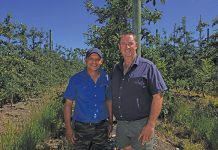A key challenge for agriculture is to reduce greenhouse gas emissions. This can be done by further improving efficiency, tying up greenhouse gases into soil and plant systems and producing products that store carbon. That’s according to Dr Richard Eckard of the University of Melbourne’s Institute of Land and Food Resources. S peaking at the congress of the Grassland Society of Southern Africa, he said the fourth assessment report of the Intergovernmental Panel on Climate Change concluded that increases in methane and nitrous oxide are largely due to agriculture. “In South and New Zealand, greenhouse gas emissions from the agricultural sector contribute 11%, 16% and 49% respectively of the national total. In these countries, farming is the dominant source of methane and nitrous oxide – both powerful greenhouse gases with global warming potentials of 23 and 297 times that of carbon dioxide.
So, at least in Australasia, the introduction of emissions trading and climate change bills will demand targeted reductions in gas emissions from all sectors, including agriculture,” said Eckard. he Greenhouse in Agriculture (GIA) programme in Australia has focused on win-win abatement options in which breeding, feeding and the management of animal numbers can reduce methane emissions while improving production efficiency, according to Eckard. “On the other hand, nitrous oxide research has focused on reducing uncertainty in inventory estimates and making nitrogen fertiliser use more efficient,” he said. he GIA programme has highlighted large differences in methane emissions between animals within herds and between seasons, together with pasture quality variations. “research showed that supplementing dairy cows with 2,7kg/day whole cottonseed (23% oil) resulted in a 16% increase in milk solids and a 21% decrease in methane. Feeding a tannin extract from the black wattle also resulted in less methane and had potential benefits through reduced urinary nitrogen excretion,” Eckard said. – Roelof Bezuidenhout








